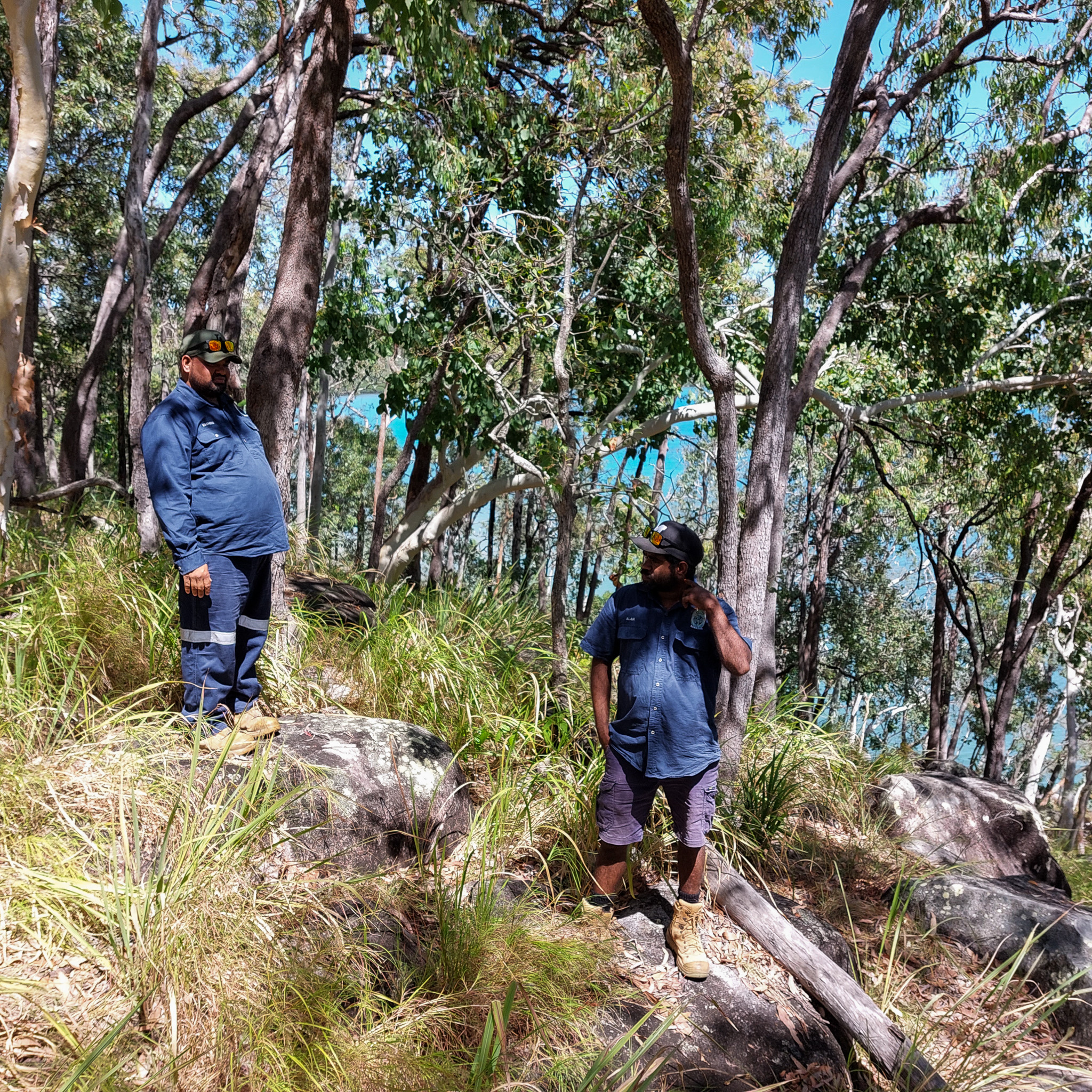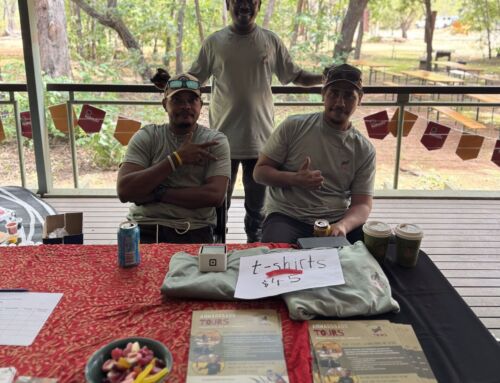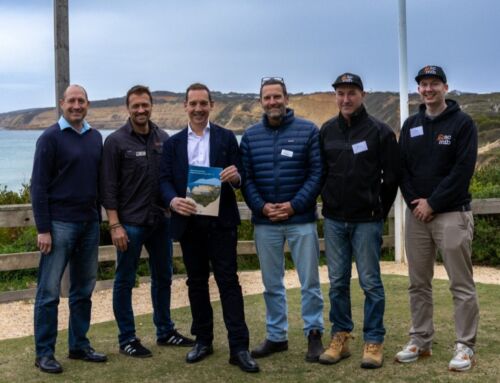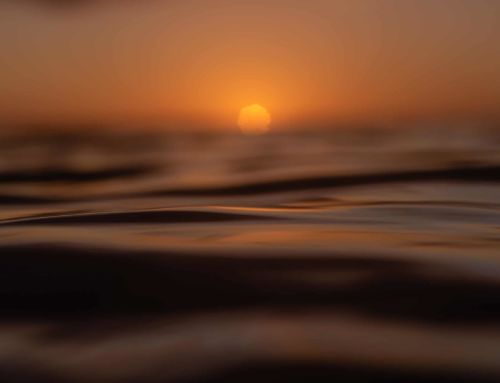To walk on Country with its Traditional Owners and caretakers is humbling, a privilege and an experience that will never be forgotten. From a professional perspective, when working with Indigenous organisations, communities and people, a Walk on Country with those who understand it best is invaluable. TRC Tourism’s specialist work in Indigenous Tourism brings us many special opportunities like this which are priceless in informing the work that we do, and increasing our understanding of the values, connection, and relationship our Australian First Peoples have with their Country.
Recently, our Director Janet Mackay has been working with the Palm Island Aboriginal Council to examine opportunities for tourism on Palm Island and its surrounding islands and raising the profile of the region as a destination for visitors. With clear water and immaculate fringing reefs on the shorelines, there are many assets to work with. Senior Consultant and recreational trail specialist, Chris Halstead, joined her on a recent site trip. He was there to look at opportunities for walking trails around Palm Island, and value-add experiences that could utilise and complement an existing but limited trail network.
A key part of his investigations was the opportunity to walk on Country with Traditional Owners and Aboriginal Rangers. They looked at potential trail routes on all sides of Palm Island, and ways to link up with points of interest, including Little Cannon Bay and Big Cannon Bay, where a walk would be rewarded with a refreshing dip and a snorkel around the nearby reef. Another attraction that could be accessed by walking trail is the old Catalina Sea Plane base, which features two wrecked seaplanes on the beach, relics of the United States’ presence during WWII.
“The value of going to these locations with their Traditional Owners and caretakers is that you aren’t just looking at a view or an attraction, or a place to swim,” Chris says. “The local knowledge they bring is significant – not just recent knowledge, knowledge that has been passed down for generations. And you also gain a rich understanding of the local perspective – you gain the Cultural perspective, but also an understanding of the local community’s thoughts and feelings regarding visitors, their impacts, the level of respect for interactions with Culture, people and their privacy.”
“On a very basic level”, he says, “you will get taken to the best spots with the greatest potential for future visitor experiences. You gain a rich understanding for the knowledge and connection the people have with Country, its history, its significance and its seasonality,” Chris says. “As you walk, they are always pointing out places of interest, sharing stories about Country. They are always plucking something off a tree to eat or telling you what will be growing there next season.”
“On Palm Island that knowledge and connection obviously extends to the sea, where crayfish and other delicacies can be quickly found if you are with the right people. While you are walking, they might even take the opportunity of being out on country to do a quick cultural and fuel reduction burn, if the conditions are right. Being able to observe and be a part of these traditional practices is a privilege and provides invaluable insights that can’t be found in documents or even face-to-face workshops,” Chris says. “What provides the greatest impact, however, is the openness and the welcoming nature of the people taking us out on Country. Their willingness to chat with us, include us, and share with us is so very much part of Aboriginal culture.”
“On Palm Island they were very keen to show off their country and talk to people about the things they know and to openly discuss where they would not want future visitors to go. They recognise they are just one part of their community and look forward to further discussions with the broader community about future trails and visitors. They have great pride in their Country and in what they do, and they see future opportunities and benefits for their islands” Chris says. “It is invaluable in our work to know from the local perspective, the perspective of the destination’s Traditional Owners and custodians, what those opportunities are.”
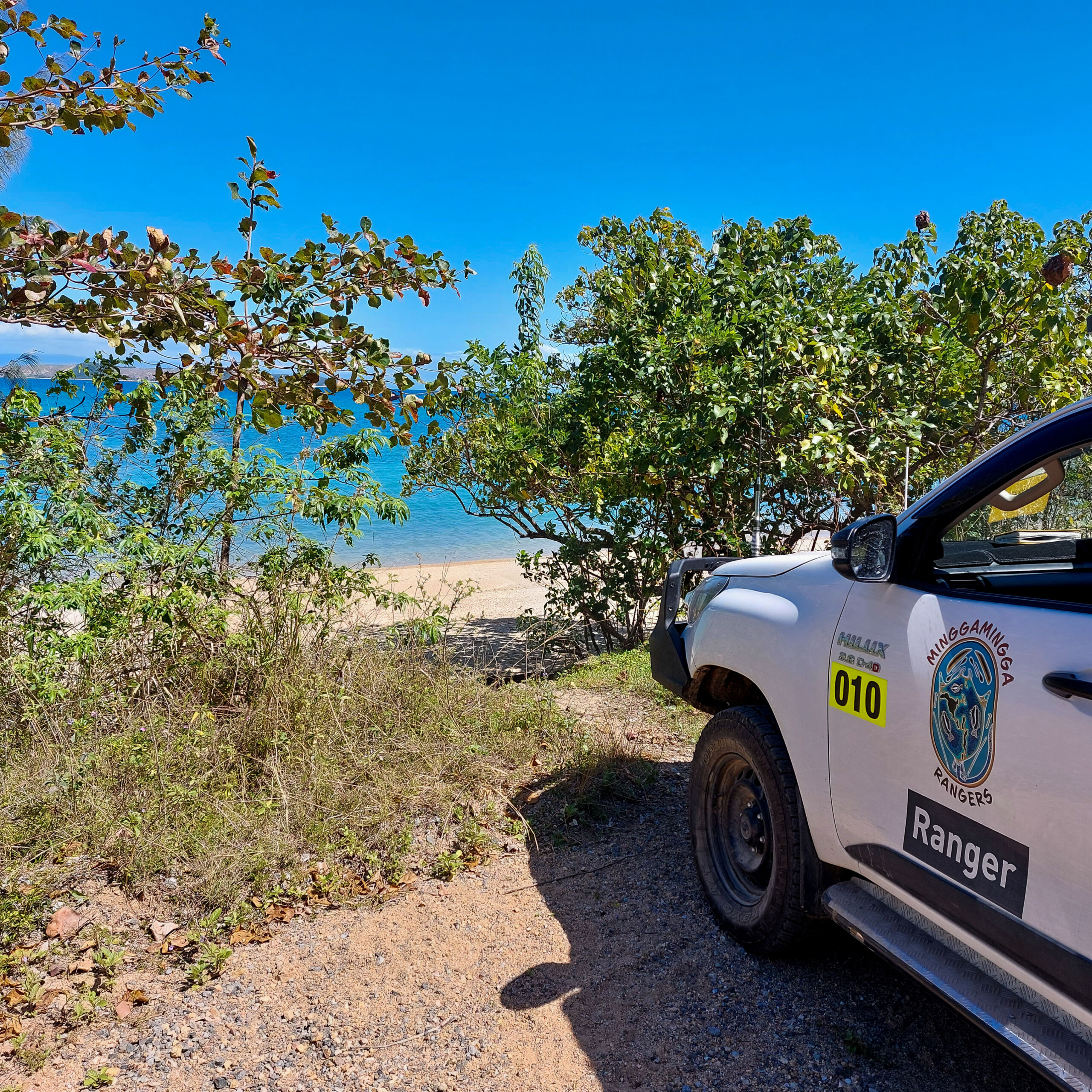
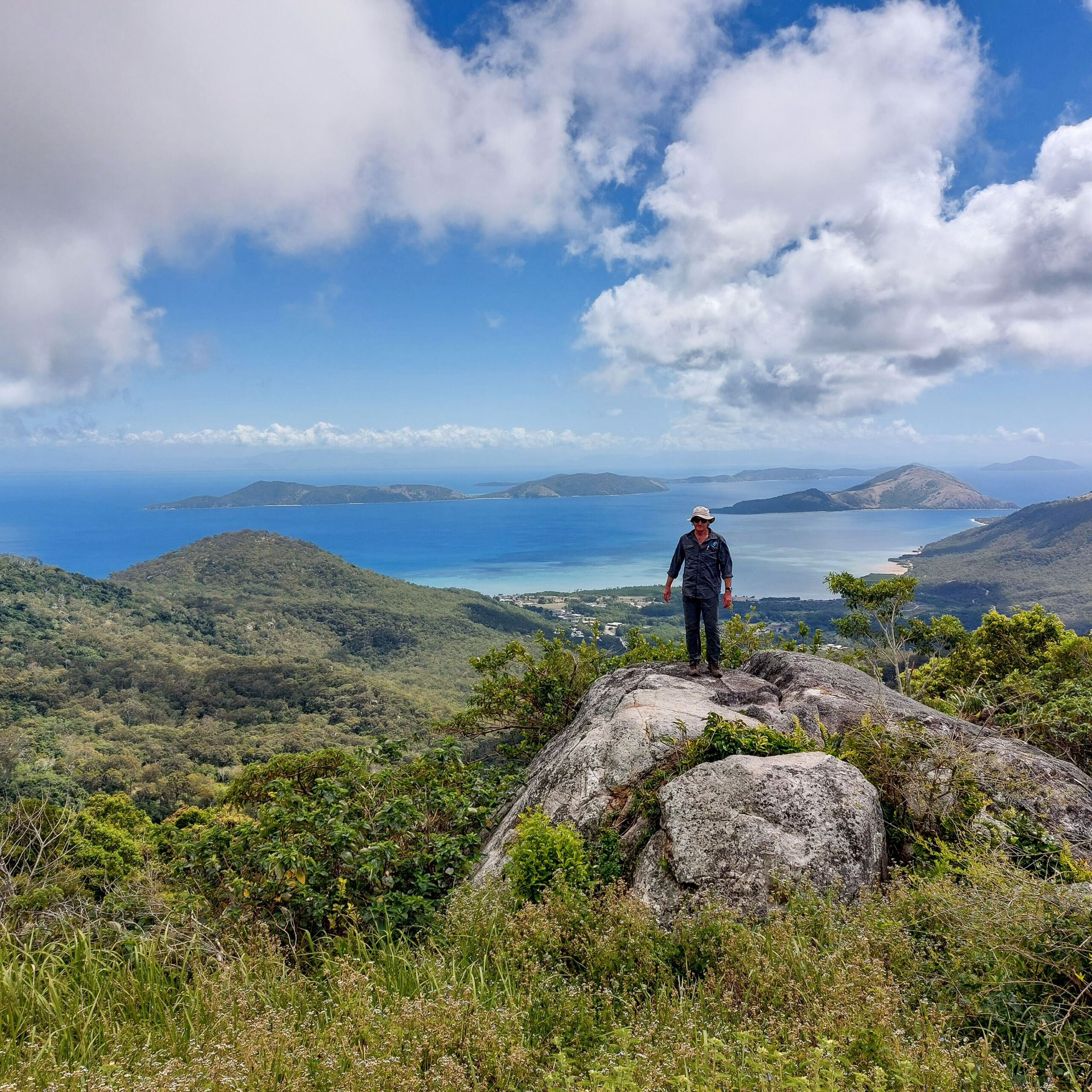
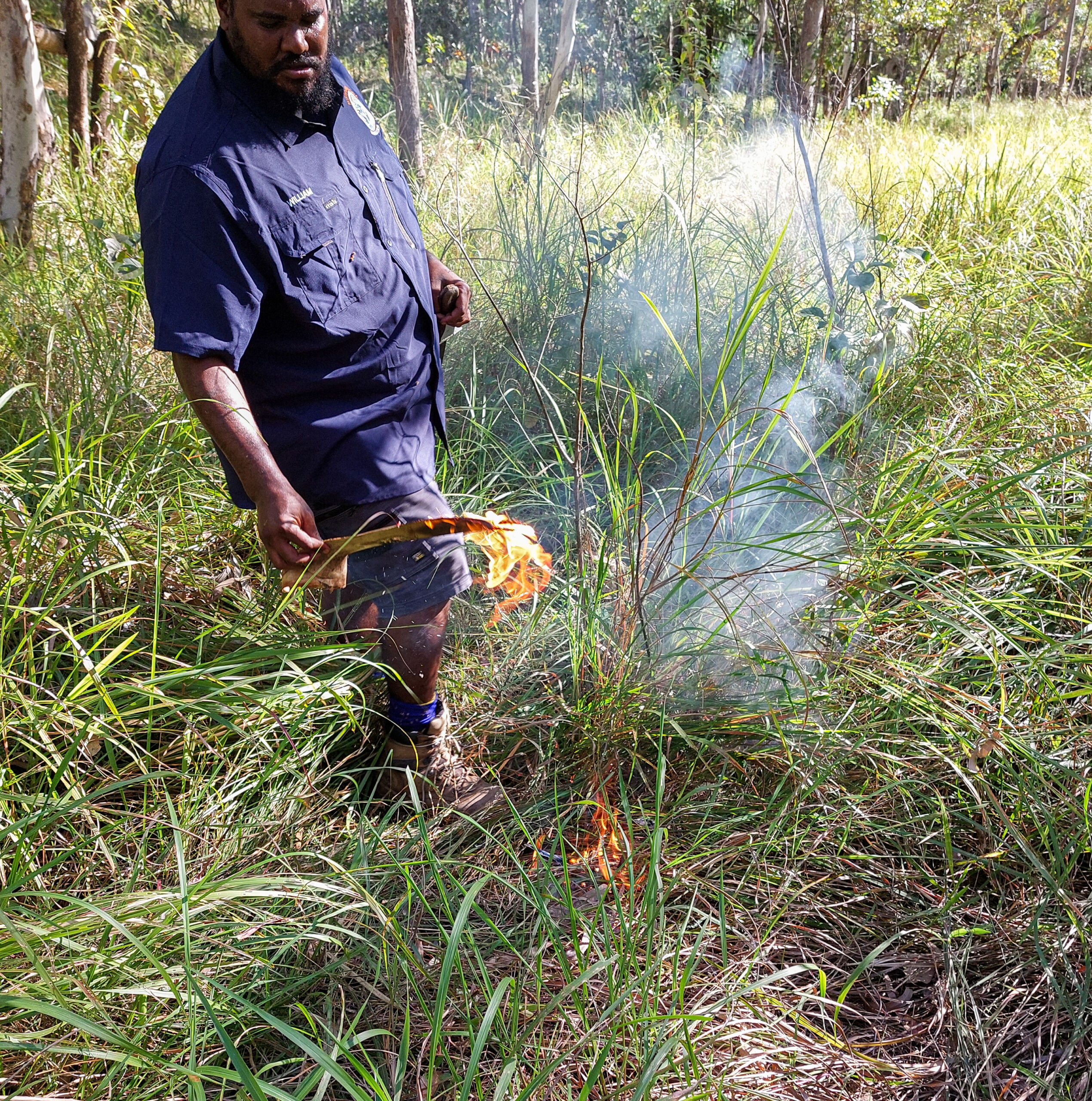
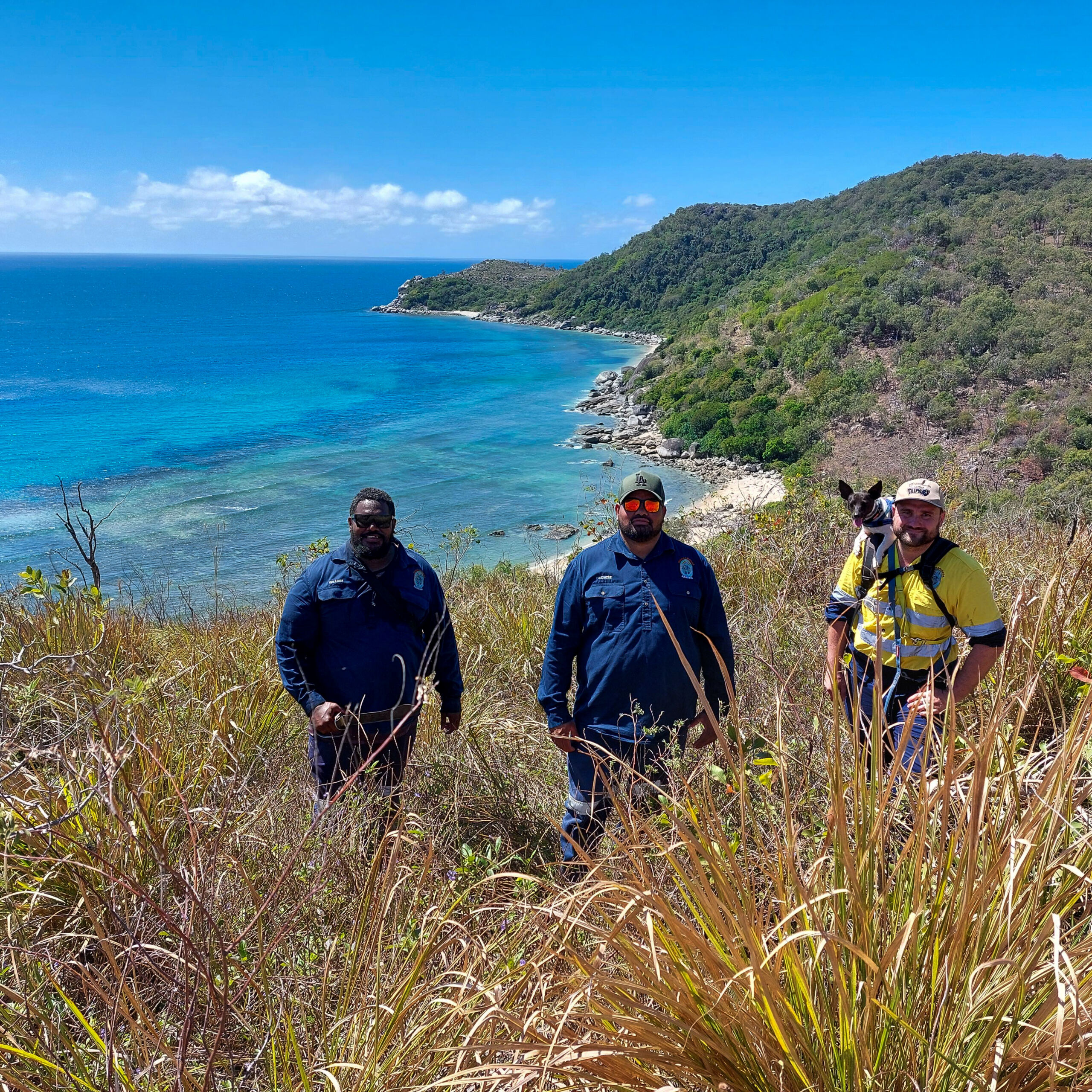
Images: Senior consultant Chris Halstead and Indigenous park rangers on their journey walking on Country through Palm Island.


